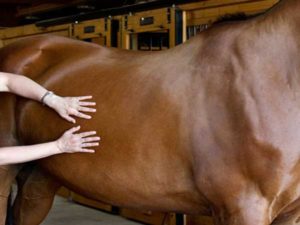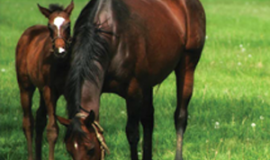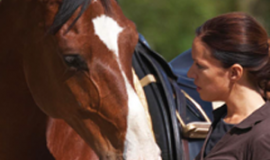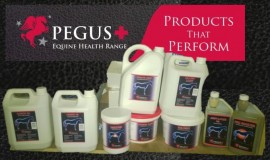We often use the term “maintenance requirement” believing its meaning to be well understood by most horse people. We might, however, speculate as to what extent this is true. Today most horses are owned, used and fed by people with little or no connection to farming practice or theoretical knowledge about their horse’s nutritional requirements, and how this is to be calculated.
Maintenance requirements can be described as the nutrients needed to maintain a body in a steady state. This means that the animal should no longer be growing nor be pregnant or lactating, and should be able to maintain a constant body weight. In addition, the animal should only be engaged in minimal physical activity. For practical reasons, we can consider normal levels of activity for horses to be stabled in a box and let out during daytime in a paddock. However, if the activity in the paddock is too high, extra energy has to be provided in addition to the maintenance requirement. For more sedate horses, we may have to reduce the energy content of the ration in order to prevent them from growing too fat.
Breed differences
The maintenance requirement for energy differs between breeds or type of horses. Coldblooded types of horses and most ponies have a lower maintenance requirement for energy than warmblooded horses, and TB’s even higher than this.
If the maintenance requirement for energy is calculated for a coldblood type of horse, warmbloods and TB’s with similar bodyweights should have 5% and 10% more, respectively.
It is important to take into account that there will also be marked individual differences within breeds, so the final adjustment of the ration has to take place at an individual level by observing the body condition of each horse.
Mares, geldings and stallions
Stallions normally have a higher level of voluntary activity than mares and geldings. Therefore, the maintenance energy requirement for stallions should be set 10% higher than for mares and geldings of the same breed.
Outdoor conditions
When several horses are kept together outdoors during daytime, they often have free access to roughage most of the time. Under such
conditions, the hierarchy in the group can often lead to the dominant individuals eating more and growing fat, while the more submissive individuals may become thin. Again, we have to observe body condition changes of each individual closely, and adjust feeding during the indoor hours accordingly. In addition, climatic conditions during winter may lead to an elevated energy requirement.
Calculating maintenance requirements with Pegus Horse Feeds
When calculating a horse’s maintenance requirements, there are several options available to help take into account the variations between individuals?
For breed differences the options are “Coldblood and Native Pony”, “Warmblood” and “Thoroughbred”.
For sex differences the options are “Stallion” and “Mare and Gelding”.
If the bodyweight of a horse has to be adjusted (too thin/fat) this can be taken into account when entering the normal bodyweight of the horse. This option is named “Correction of body weight”. This will help change the horse’s requirements and provide a balanced diet suitable. For more information contact Pegus Horse Feed
www.pegus.ie info@pegus.ie
Free Phone Helpline R.O.I.= 1800-378463 UK = 0800 011 4182








